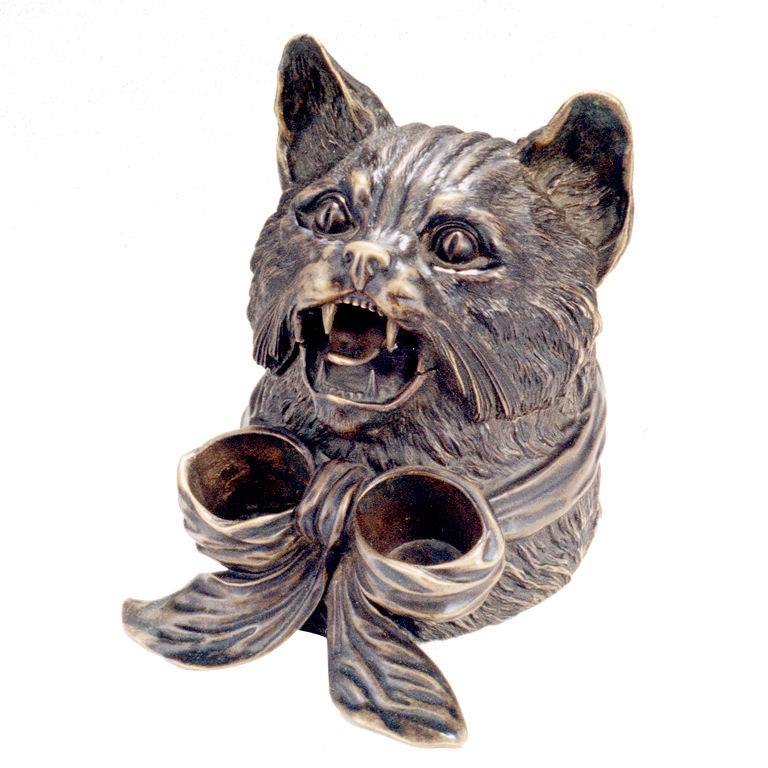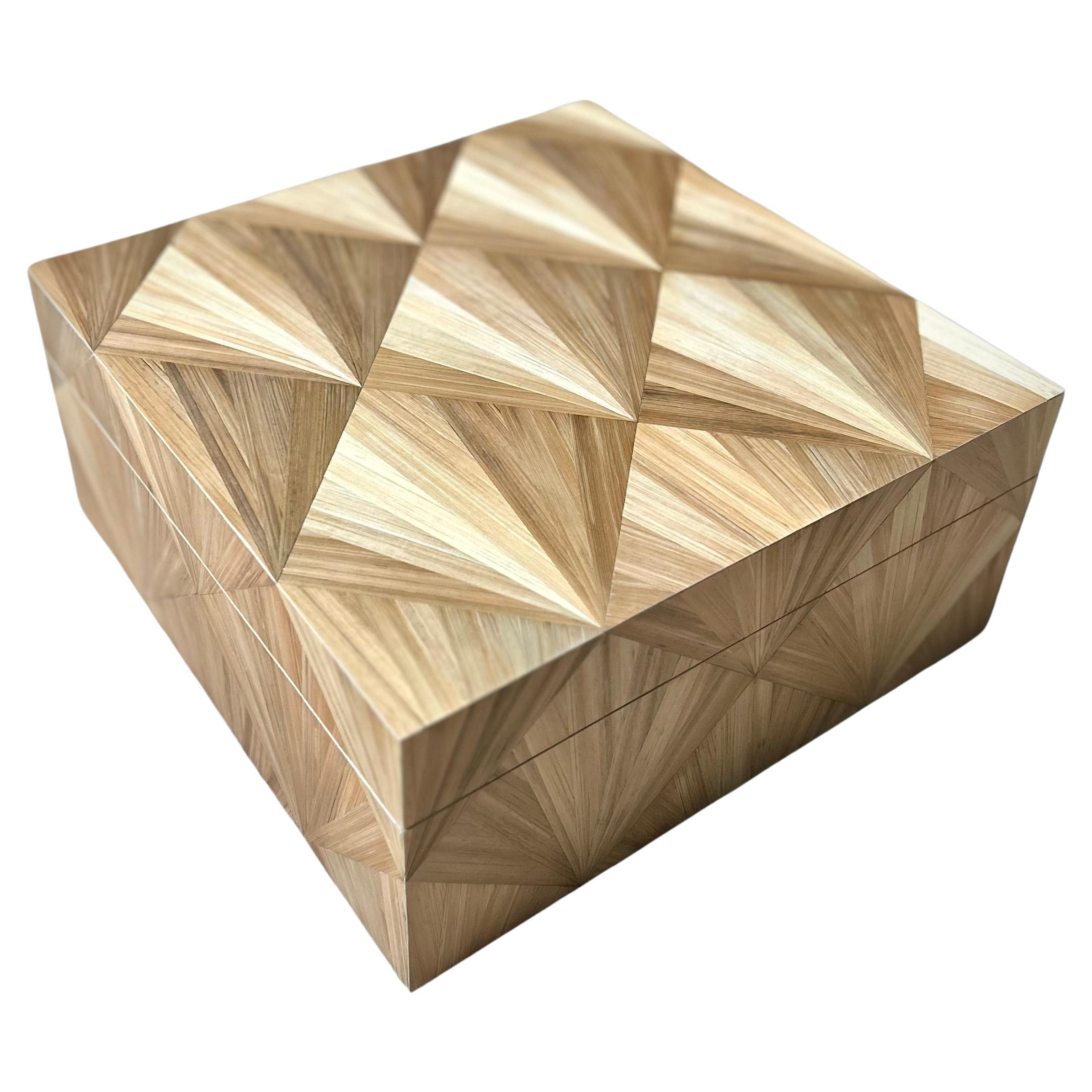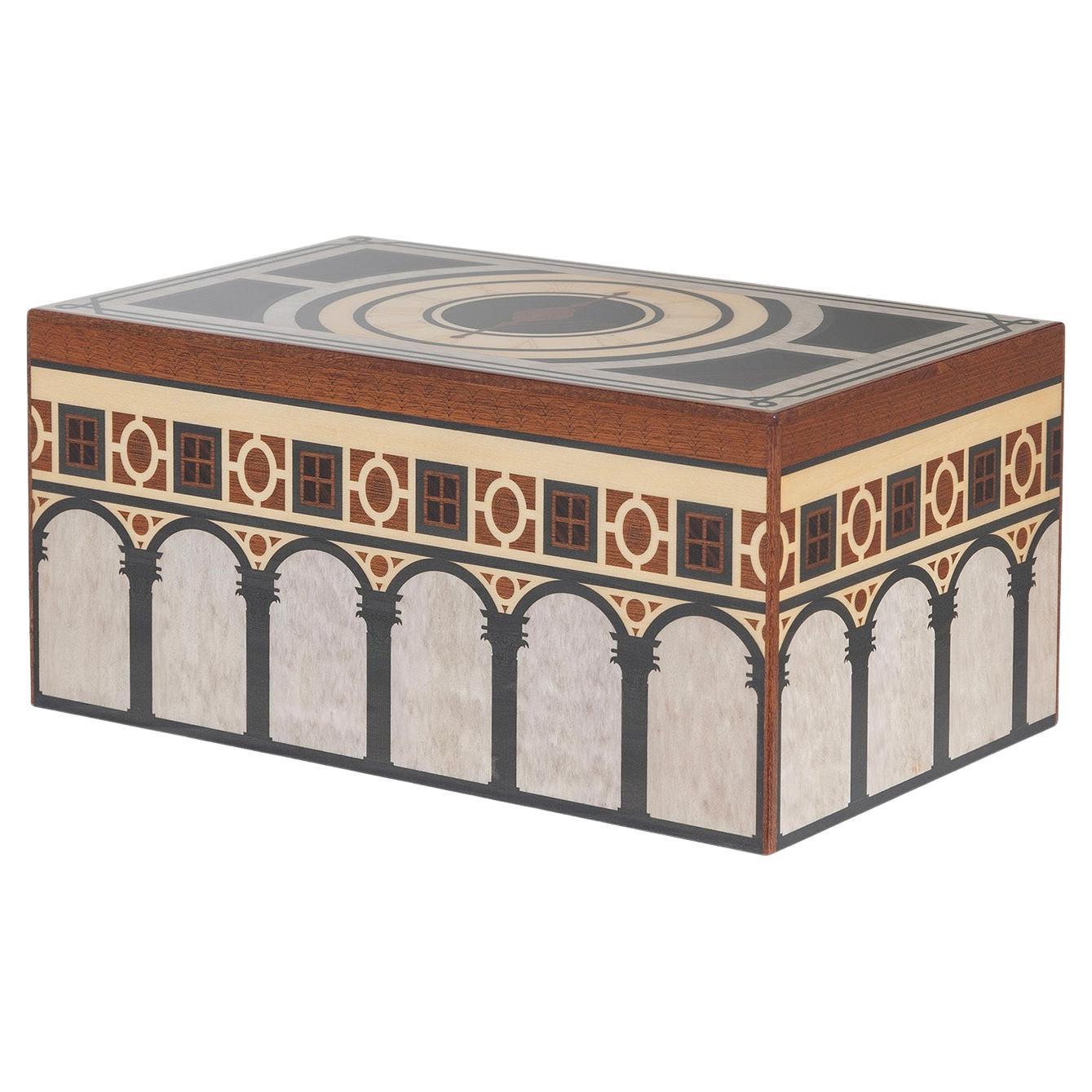Items Similar to Montecristo Cup 2000 Humidor Limited Edition
Want more images or videos?
Request additional images or videos from the seller
1 of 20
Montecristo Cup 2000 Humidor Limited Edition
About the Item
2000 Montecristo Cup, Painted Lid Great Condition, Limited Edition
The 2000 Montecristo Cup refers to a three-day golf tournament that has been held in the Caribbean by Montecristo, one of the most recognizable names in the cigar industry. The 2000 Montecristo Cup Humidifier is made of rich wood. It is decorated with a beautiful enameled painting of a Caribbean golf course and a hole in one. There are beautiful gold painted handles for easy carrying. The interior is in perfect condition for placement of cigars. The Montecristo authentic logo is printed on the front.
Since its beginning, talented Montecristo cigar makers have been drawing in aficionados decade after decade with premium tobacco blends from the Dominican Republic, Peru, Honduras and Nicaragua offering complex and bold flavor with notes of coffee, earth, and a touch of sweetness.
- Dimensions:Height: 7.75 in (19.69 cm)Width: 15.5 in (39.37 cm)Depth: 11.9 in (30.23 cm)
- Materials and Techniques:
- Place of Origin:Dominican Republic
- Period:
- Date of Manufacture:2000
- Condition:
- Seller Location:Bloomfield Hills, MI
- Reference Number:1stDibs: LU7781233657662
About the Seller
5.0
Gold Seller
These expertly vetted sellers are highly rated and consistently exceed customer expectations.
1stDibs seller since 2022
11 sales on 1stDibs
Typical response time: 1 hour
- ShippingRetrieving quote...Ships From: Detroit, MI
- Return PolicyA return for this item may be initiated within 14 days of delivery.
More From This SellerView All
- "Tea Caddy" English Tortoise Shell & Mother-of-Pearl Double Compartment 19th-c.Located in Bloomfield Hills, MISALE ONE WEEK ONLY Regency Mother-of-Pearl Inlaid Tortoiseshell Tea Caddy from the 1st quarter of the 19th century. It has a sarcophagus form with hinged cover opening to disclose t...Category
Antique Early 19th Century English Regency Decorative Boxes
MaterialsTortoise Shell, Mother-of-Pearl
- "Victory 1805" Brass Box, Warm Color, Embossed Design, Lion's Head HandleLocated in Bloomfield Hills, MISALE ONE WEEK ONLY "Victory 1805" brass box has exceptional details, the lion's head fixtures with brass rings, lions feet on which the box stands and the embossed etching of a sail...Category
Antique Early 19th Century Unknown American Colonial Jewelry Boxes
MaterialsBrass
- Ruben Nakian Bronze Figurine "Leda and the Swan" Limited EditionBy Reuben NakianLocated in Bloomfield Hills, MISALE ONE WEEK ONLY “Leda and the Swan” is by Reuben Nakian (1897 - 1986). He was an American sculptor and teacher of Armenian extraction. His works’ recurring themes are from Greek and Roman mythology. Nakian’s small bronzes achieve majesty and power which are not dependent on size and amplitude. With characteristic freshness, he has reinterpreted the classical subject of Leda and the Swan refining it in the Classical-Renaissance-Baroque tradition in a contemporary way. Dr. Robert P. Metzger gives us his aesthetic interpretation of this work which retells the myth in classical hedonism and freedom of expression showing Leda and the Swann prior to her being ravaged and during their first meeting. “The young virgin is fascinated with her new found friend and accepts him in a spirit of playfulness, contentment and wonder. She is dreamily available and shyly seductive as the deceptively tame swan snuggles up to her with its phallic-like neck.” Leda appears composed, placid yet open and available as compared to her more intense and passionate states in other of Nakian’s depictions on the same theme. This was cast at the "Renaissance Art Foundry" in 1978 and is so marked on the base being #5 of 7. It is believed that “no other sculptor of the twentieth century matched Rueben’s heroic renditions with the grand themes of Western Art. His erotic mythological figures exude a joyous energy of gesture and movement which place them among seminal sculptural achievements of the past one hundred years.” Nakian studied at the Independent School of Art in New York City previously known as the Robert Henri School … with Homer Boss...Category
Vintage 1970s American Figurative Sculptures
MaterialsBronze
- Monumental Harry Bertoia Silver Necklace, Bertoia Catalogue Raisonne D.JE.49By Harry BertoiaLocated in Bloomfield Hills, MIWEARABLE ART AN IMPORTANT DESIGN FOR A NECKLACE The necklace is unique and extraordinary. Because of its specific design elements it lays beautifully and comfortably on any body structure. This piece comes from a private collection. Provenance will accompany the piece. It has been authenticated by Val Bertoia and is listed in the Harry Bertoia Foundation Catalogue Raisonne # D.JE.49 having been authenticated as a Harry Bertoia piece. REPLY FROM CHRISTIE'S: "Dear Charles, thank you for contacting Christie's. I am absolutely stunned to see the necklace by Harry Bertoia you have submitted for feedback from us, and I would love to speak with you about the work at your earliest convenience. I am a great fan and a known expert in the work of Harry Bertoia, and I have handled over 600 of his sculptures, jewelry and art over the last 22 years. I have never seen a better piece of his jewelry, and it stands as one of the greatest objects in any category that he made. Michael Jefferson Senior Vice President International Senior Specialist Design" The following is from Beverly H. Twitchell, PhD, author of Bertoia: The Metalworker, London: Phaidon, 2019. She provides a very informative critique of Bertoia and his jewelry. Wearable Art an Important Design for a Necklace “Before Harry Bertoia enrolled at the Cranbrook Academy of Art in 1937 he had already mastered traditional jewelers’ techniques, but his engagement with Modernism led him to invent and use more direct methods. Instead of precious metals and gems, Bertoia made jewelry that appealed through its design, craftsmanship and the nature of its materials. That approach would make Bertoia a direct predecessor of the American Studio Crafts movement. So complex and cumulative are human perception and memory that we often do not know from where our own ideas come and without firm evidence, it is impossible to think we can establish the origins of an artist’s ideas. While his jewelry is entirely modern, chokers with multiple small pendants had come from ancient Mediterranean cultures: Mesopotamia, Egypt, Greece and Italy, even from Europe and America at the turn of the last century. Did Bertoia see works in books, journals or at the Detroit Institute of Arts that resonated with him or did he invent this on his own, as he would so many other forms? Bertoia found inspiration in nature from an early age on a small farm in Italy and later in Cranbrook’s woods, on the beaches of southern California and in the fields near his home in eastern Pennsylvania where he lived after 1950. The fluidity and motion of the his jewelry characterize much of his art. In that spirit, too, he made jewelry that suited human anatomy and was animated by its wearer’s movement. Bertoia had the instincts of an engineer, as the intricacy of the present lot’s clasp and overall construction of the jewelry demonstrates. Large jewelry by Bertoia is very rare. A delight to the eye, and like all of Bertoia’s work it is timeless. Bertoia had the instincts of an engineer, as the intricacy of the present lot's clasp and the overall construction of this piece demonstrate. Closed, the necklace sits on a table in a surprisingly conical shape, but it is so flexible that it conforms to its wearer from her neck nearly to her shoulders. Each handmade section is riveted to its neighbors, allowing it to adjust to the body while the pendants curve in many directions: one fits the left clavicle so precisely that Bertoia likely tried it on Brigitta Valentiner, who became his wife in 1943. Other pendants face toward or away from each other, bending up or down. Each element has been hammered into multiple curves and worked in Bertoia’s hands. Large jewelry by Bertoia is very rare. A delight to the eye, this necklace no doubt caused a sensation in its day as it might at the 2022 Met Ball in ours, for like all of Harry Bertoia’s work, it is timeless.” Harry Bertoia (1915 – 1978) was an Italian-born American artist, jewelry creator and modern furniture designer. He was born in San Lorenzo d...Category
Vintage 1940s American Abstract Sculptures
MaterialsSterling Silver
- Tony Rosenthal Abstract Sculpture Blackened Steel Red BlushesBy Tony RosenthalLocated in Bloomfield Hills, MISALE ONE WEEK ONLY UNTITLED is an abstract blackened steel sculpture that has a continuous lively movement. The positioning of the heavy metal is suggestive of dance. There are similarities to the sculptors, Robert Sestok and Tony Smith, who both worked in bronze and painted steel with similar cut out pieces and abstract designs. Untitled has a joyous aura and its small size makes it a charming intimate piece. It might have been a maquette for a much larger piece. The design works in this 14" height as it would in a 14' height. There is a Letter of Certification that will accompany the sculpture. Tony Rosenthal (1914 - 2009) is best known for creating a staggering list of monumental public art sculptures. For over seven decades Tony Rosenthal created an arc of sculpture in a variety of sizes, styles and media, including wood, steel, bronze, brass, cement and aluminum. Every day millions see, enjoy and interact with art created by Rosenthal in cities around the world. In New York City alone, five Rosenthal public art sculptures have been beloved and visible 24/7 for over four decades, yet Rosenthal is not a household name. Art dealer Joseph K. Levene, told The New York Times, Tony Rosenthal "reminds me of a character actor. You know the face but not the name. With him, you know the art." Tony Rosenthal dedicated his life to creating art and actively created sculpture everyday in his Southampton, New York studio until he passed away at the age of 94, July 28, 2009. At nine Rosenthal learned the fundamentals of carving sculpture when his mother, an opera singer enrolled him in children's classes at the Art Institute of Chicago where he learned how to carve sculptures in soap. In 1936 Rosenthal earned a B.F.A. from the University of Michigan, and in 1952 became the first instructor of sculpture at the University of California, Los Angeles. In 1950 Rosenthal was recipient of the San Francisco Museum of Modern Art’s sculpture award; in 1967, Rosenthal received the outstanding achievement award from the University of Michigan and in 1963 a Ford Foundation Grant. After graduating from the University of Michigan, Rosenthal became studio assistant to Alexander Archipenko, the figurative master sculptor, casting bronzes in exchange for sculpture lessons; at night, Rosenthal taught evening classes in drawing and sculpture. In 1939, Rosenthal enrolled at Cranbrook Academy of Art, studying with Carl Milles, Cranbrook's sculptor in residence; there, Rosenthal forged friendships with husband and wife designers Charles Eames and Ray Eames and the sculptor Lilian Swann Saarinen the wife of architect, Eero Saarinen. Decades later Rosenthal acknowledged his gratitude to Cranbrook by donating his archives to them. The Cranbrook Cube, 1984, a 90" painted aluminum cube is in the Cranbrook Museum collection. In 1942, Rosenthal was drafted into the U.S. Army; while stationed in Paris Rosenthal forged friendships with George Braque, Andre Derain, Le Corbusier and Constantin Brancusi, routinely organizing and accompanying groups of soldiers on studio visits. Through multiple visits to Brancusi's Paris studio, Rosenthal learned to create and forge metal sculpture...Category
Late 20th Century American Modern Abstract Sculptures
MaterialsSteel
- Hutchenreuther Porcelain Figurine Fritz Klee "OWL"By Professor Fritz KleeLocated in Bloomfield Hills, MIThe 24 carat gilded owl was created by Professor Fritz Klee around 1920 for Hutschenreuther Porcelain. This beautifully crafted piece is unusual in that sur...Category
Vintage 1910s German Animal Sculptures
MaterialsGold
You May Also Like
- Dolcevita HumidorBy MaccarroneLocated in Milan, ITThis iconic humidor is part of Maccarone's Yacht collection and can hold up to 150 cigars. Metal accessories in chromed brass and high gloss mahogany and mapl...Category
2010s Italian Modern Cigar Boxes and Humidors
MaterialsPolyester, Wood
- Cuba HumidorBy MaccarroneLocated in Milan, ITThis iconic humidor is part of Maccarone's Marquetry collection and can hold up to 150 cigars. The design of this humidor and its vibrant colors are a celebra...Category
2010s Italian Modern Cigar Boxes and Humidors
MaterialsPolyester, Wood
- Cat HumidorLocated in New York, NYFor cat lovers, bronze humidor realistically shaped as a cat's head. Opens to reveal humidor space. Large ribbon around neck forms two storage bowls.Category
Antique 19th Century English Boxes
- StrawMarquetry HumidorLocated in ARSAC, FRHumidor / Cigar box Meticulously handcrafted, it is made entirely of solid Lebanese cedar wood, including their interior, trays and divisions to facilitate the maturation process of...Category
2010s French Art Deco Cigar Boxes and Humidors
MaterialsStraw, Cedar
- Rinascimento HumidorBy MaccarroneLocated in Milan, ITThis iconic humidor is part of Maccarone's Marquetry collection and can hold up to 150 cigars. The design of this humidor, enriched with laser-engraved detail...Category
2010s Italian Modern Cigar Boxes and Humidors
MaterialsPolyester, Wood
- Humidor StrawMarquetry RibbonsLocated in ARSAC, FRHumidor Ribbons Humidor / Cigar box Meticulously handcrafted, it is made entirely of solid Lebanese cedar wood, including their interior, trays and divisions to facilitate the matu...Category
2010s French Art Deco Cigar Boxes and Humidors
MaterialsStraw, Cedar
Recently Viewed
View AllMore Ways To Browse
Golf Cigar
Antique Cigarette Case Sapphire
Cartier Cigar Box
Cigar Music Box
Massimo De Munari
Sandalwood Art Deco
Antique Cigar Lighter Box
Antique Standing Humidor
Embalming Table
Portable Cigar Box
Tabaco Box
Antique Embalming Table
Heintz Art Metal Shop On Sale
Used Custom Saddlery
Asprey Silver Cigar Box
Cigarette Etui
Delectable Alfred Dunhill
Hamilton & Co., Calcutta On Sale





